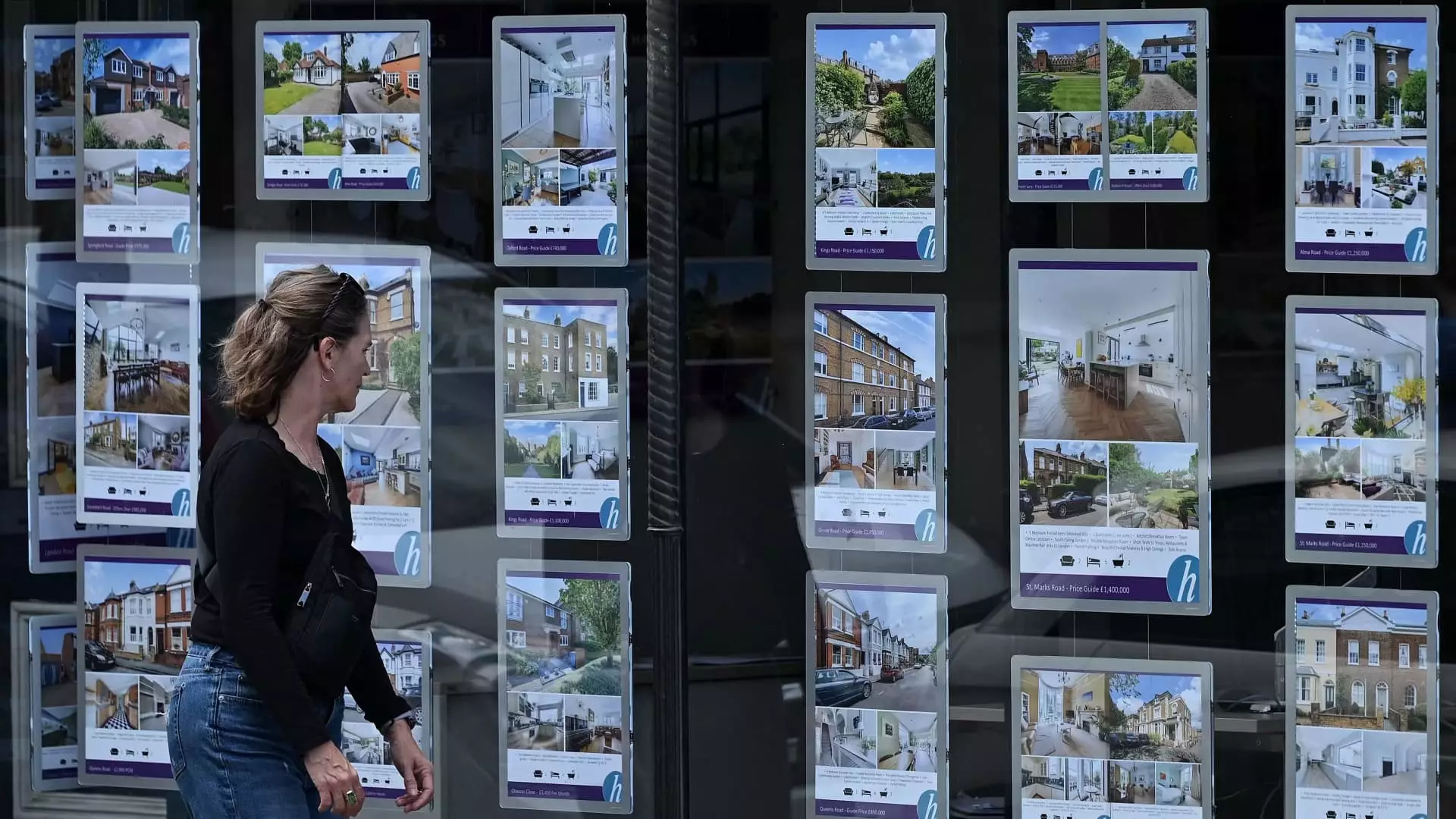The U.K. housing market is experiencing a notable resurgence, largely driven by a decrease in mortgage rates that has encouraged a fresh wave of buyers to enter the market. Recent data indicates a striking 25% increase in agreed home sales year-on-year for the four weeks leading up to September 22. This marks the fastest acceleration in home sales activity since the spring of 2021, highlighting a pivotal moment for homeowners who had previously hesitated to make moving decisions due to economic uncertainties.
As the economic landscape shifts, potential buyers are regaining confidence, evidenced by a robust 26% annual rise in homebuyer inquiries. This newfound enthusiasm is not just a temporary fluctuation; it suggests a significant structural change in consumer behavior as more individuals feel compelled to re-engage with the market after a prolonged period of indecision. The implications of this trend are profound, with companies involved in homebuilding, such as Taylor Wimpey and Barratt Developments, benefiting from this renewed activity as their shares surged by over 2.1%.
Central to this housing market revival are the declining mortgage rates, which have fallen significantly from last year’s average of 5.53% to a current average of 4.57% for a five-year fixed mortgage. Certain rates have even dipped as low as 3.7%, creating a competitive environment that is fostering greater opportunities for buyers. Richard Donnell, executive director at Zoopla, elucidated that these lower rates are crucial in boosting homeowner confidence, particularly among those who have remained on the sidelines due to rising costs and economic fluctuations.
Moreover, the Bank of England’s recent interest rate cuts have played a critical role in shaping this landscape. With mortgage approvals hitting a two-year peak in August, the momentum appears to be building. Market analysts are keenly awaiting the upcoming meeting of the Bank of England on November 7, where further nuances regarding borrowing costs will be discussed amid a more favorable economic review.
Despite national trends indicating a recovery, regional disparities in housing price growth remain prevalent. Notably, Northern Ireland is witnessing significant growth, leading the yearly increase at an impressive 8.6%. Scotland follows closely behind with a 4.3% rise in annual house prices, signaling a strong recovery outside of England. The northern regions of the U.K. are also outpacing the south, with London still showing some resilience through a 2% price growth.
However, the current market shows signs of an imbalance as apartment sales struggle to keep pace with rising demand for larger living spaces, a phenomenon often referred to as the “race for space.” This diverging trend highlights the changing priorities of consumers post-pandemic and indicates a potential shift in the types of properties that are most sought after.
Investor Behavior and Market Dynamics
The ongoing speculation about potential tax changes under the Labour government’s upcoming Autumn budget is adding another layer of complexity to the housing market. With landlords eager to divest their buy-to-let properties in anticipation of higher taxes, there is an influx of housing stock that could moderate price growth. Donnell emphasizes that the increase in available properties—coupled with potential tax adjustments—might lead to a “buyer’s market,” stabilizing house price inflation into 2025.
Finance Minister Rachel Reeves indicated the necessity for tax adjustments to bridge an identified £22 billion gap in public finances, pointing to previous economic measures that could impact capital gains and inheritance taxes—both of which are pivotal in real estate transactions. Furthermore, the ongoing dialogue around the non-domiciled tax status for high-net-worth individuals is prompting sellers, particularly in the upper market segments, to actively reassess their positions and possibly relocate to jurisdictions with more favorable taxation.
The U.K. housing market is teetering on the brink of a revitalization fueled by lower mortgage rates, increasing sales, and shifting buyer sentiment. Yet, as we navigate through these transformative times, it becomes imperative to stay attuned to macroeconomic factors that could influence future trends—many of which are influenced by governmental fiscal policies and broader economic indicators. As more buyers enter the market, balancing optimism with caution will be key in anticipating the next chapter of the housing landscape.


Leave a Reply